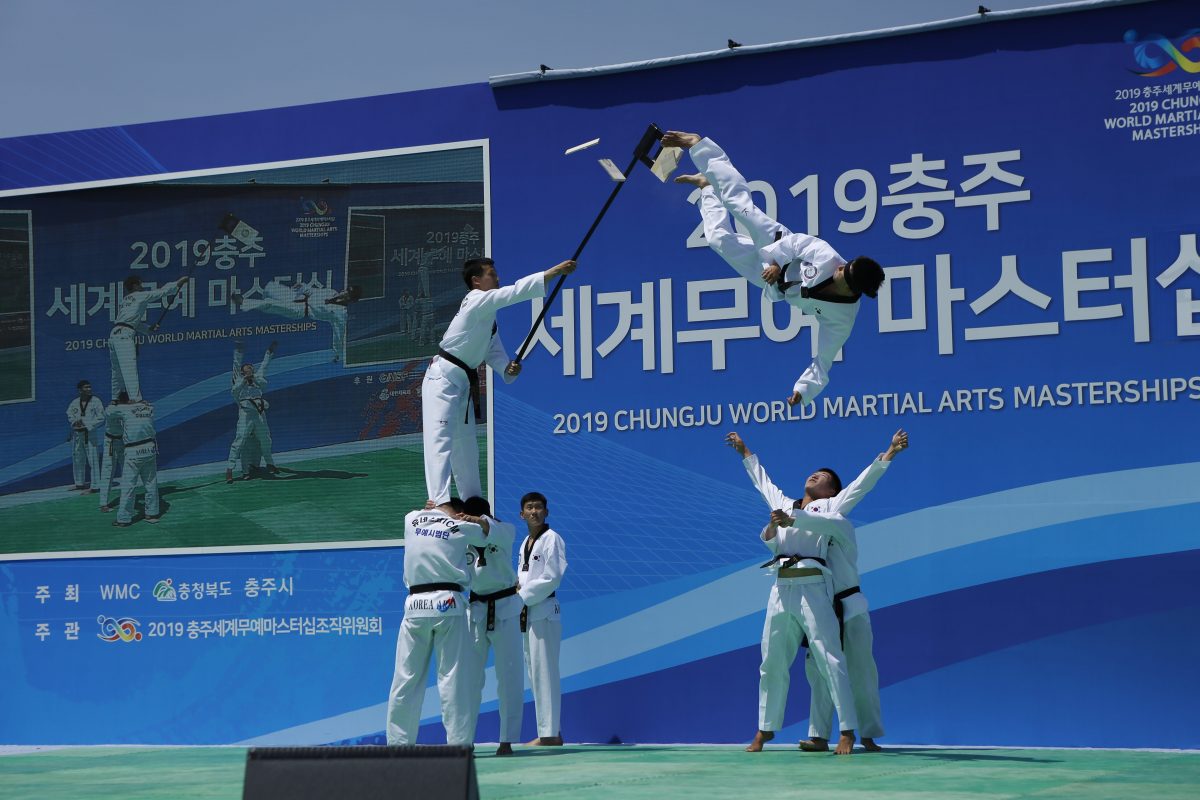
|
|
|
|
| |
| General Information |
Taekwondo is a Korean martial art renowned for its use of various kicking techniques, including spinning kicks. There are two forms of taekwondo competitions in the Olympics: kyorugi (sparring) and poomsae (pattern of defense-and-attack motions). In the sparring, contestants wear head and torso gears and should strike each other’s trunk and head with their feet and hands. They are not allowed to use body parts above the ankle bone for kicks. Punch techniques have to come out below the shoulder line and above the waist line. Contestants are divided into different groups depending on their weight and gender. |
| History/Development |
There are many historical accounts about taekwondo. The official, popular narrative established by Taekwondo communities like World Taekwondo and Korea Taekwondo Association claim that taekwondo originated in ancient times and developed through ‘Three Kingdoms Era of Korea’ from 209 to 407. They find historical records in the old tombs and murals in the era. Burdick (2001: 292) argues that most of the historical claims based on murals and tombs are exaggerated, citing that “they seem to be wrestling rather than striking” in the murals. Many modern academic findings (Capener 1995; Madis 2003; Moenig 2015) suggest that taekwondo has its roots in Japanese karate influenced by the Japanese colonial rule from 1910 to 1945. During the occupation, many Japanese culture and martial arts such as judo, kendo, and karate were introduced in Japanese-controlled schools, and often by Korean students who studied in Japan, and Koreans who worked with Japanese army and police (Burdick 2001).In the aftermath of the Korean War that occurred in 1950, the country “became more nationalistic and there was increasing pressure to develop a Korean form of Karate, rather than continue to practise in the Japanese way.” (Burdick 2001: 298). General Choi Hong-hi named a Korean form of Karate Taekwondo and led Korea Taekwondo Association (KTA) established in 1959. He founded the International Taekwondo Federation (ITF) in 1966 to spread taekwondo all over the world. Due to some political conflicts with President Park Chung-hee, General Choi moved to Canada with the ITF. KTA, against his idea, stayed in Korea and founded World Taekwondo Federation (WTF) in 1973. WTF has recently changed its name to World Taekwondo in 2017. |
| Transmission |
Since its foundation in 1955, Taekwondo gained much support and popularity as a national martial art. It became an official curriculum of primary and middle schools in the 1970s. The first World Taekwondo Championships were held in 1973. In 1980, WTF was recognised by the International Olympic Committee (IOC). It was then designated as a demonstration sport for the first time in the 1988 Seoul Olympics and the 1992 Barcelona Olympics. Taekwondo has officially become an Olympic sport since 2000 Sydney Olympics. |
| Relevant Organisations |
- Korea Taekwondo Association
- World Taekwondo
- International Taekwondo Federation |
| References |
-Burdick, D. (2001). “Korea” in Green, T. (ed.) Martial Arts of the World: An Encyclopedia Volume 1 CA: Santa Barbara, ABC-CLIO.
-Capener, S. D. (1995). “Problems in the Identity and Philosophy of t’aegwondo and their Historical Causes”. Korea Journal 35(4): 80-94.
-KISS. (2018). 태권도 활성화 및 세계화 전략 연구(Research on Strategies for Promoting and Internationalising Taekwondo.
-Madis, E. (2003). “The Evolution of Taekwondo from Japanese Karate”. In Green, T. and Svinth, J. (eds.) Martial Arts of the World: An Encyclopedia of History and Innovation. Santa Barbara, CA: ABC-CLIO.
-Moenig, U. & Kim, M. (2016). “The Invention of Taekwondo Tradition, 1945-1972: When Mythology Becomes ‘History’”. Acta Koreana 19(2): 131-164.
-Korean Taekwondo Association. (2020).
-World Taekwondo. (2020). | |
|
|
|



